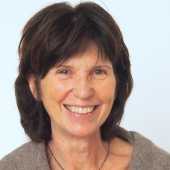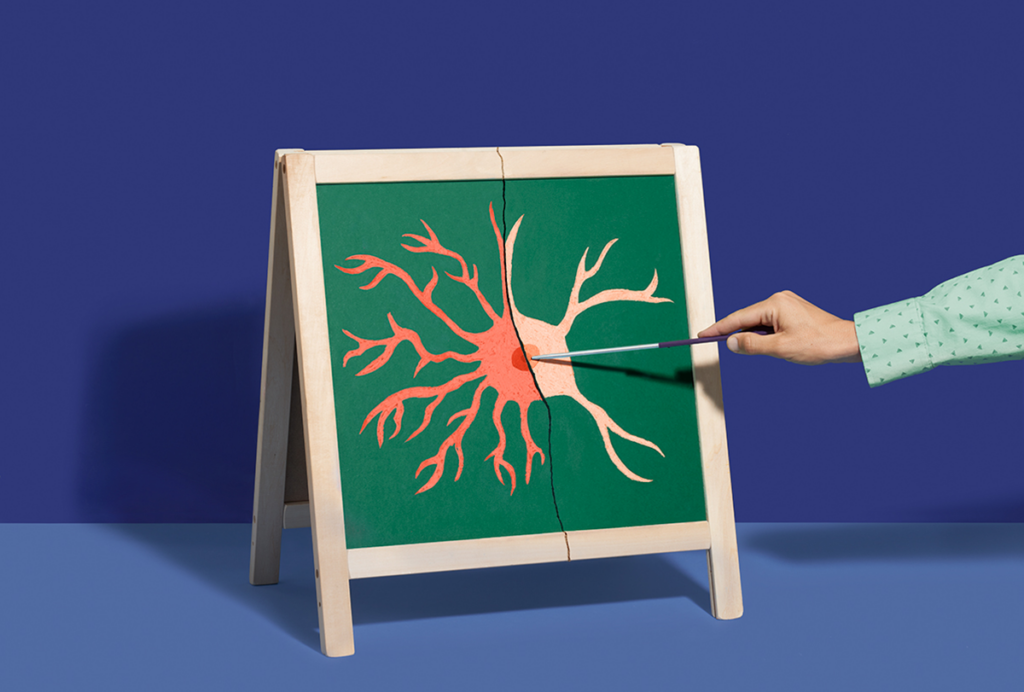
Reactions from INSAR 2019
The autism research community is gathering in Montreal, Canada, this week for the meeting of the International Society for Autism Research.
4 May 2019: Day three
Research fellow in autism and neurodiversity, University of Exeter
Sex education: “Mark Stokes, associate professor at Deakin University, reported an online survey on the sexuality and sexual experiences of autistic people and controls, with an emphasis on autistic women. He and his colleagues found that autistic women had a similar interest in sex to non-autistic women. They also had a similar number of total sexual experiences, regretted sexual experiences and unwanted sexual advances. However, autistic women were 2.4 times more likely than non-autistic women to view sex as transactional: It was often something they did in exchange for feeling loved and wanted by another person. Also, women were several times more likely to have experienced unwanted sexual advances than men in both the autistic and non-autistic groups. Women also reported less interest in sex than men did, as a group.
“Yesterday, Julie Lounds Taylor, assistant professor at Vanderbilt University, presented that autistic women had twice the number of identified medical conditions as autistic men. Together with today’s presentation from Stokes, these results suggest that the pressure to please others and the marginalization of women in society affect autistic women’s health in adverse ways. All of this highlights that we need to work to empower autistic women, and women generally.”
Assistant professor of psychology, University of Nottingham
Autistic allies: “The highlight for me at this year’s meeting was the increasing presence of autistic people. There is also now funding available from INSAR to support greater inclusion of autistic researchers and community members in the conference. However, more progress is needed to make sure that the voices of autistic people and their allies are at the heart of setting the autism research agenda.”
Pressing priorities: “This year at INSAR, my colleagues and I — in partnership with autistic people — presented our top 10 priorities for future research on suicide in autism. We consulted more than 1,000 autistic people and their allies worldwide over the course of three years to identify these priorities. It was a very powerful moment for me when a number of autistic people in the audience spontaneously came forward to share their own personal experiences. They gave voice to the importance of these research priorities to the lives of autistic people worldwide. The potential for making a positive difference by addressing tragic life-and-death issues is clear when we listen and learn together with the autism community. As a research community, we need to see the opportunities and value of this kind of participatory study in other areas of autism research, too.”

Professor of radiology, neurology and psychology, University of Missouri
Playbook to progress: “Today, Elizabeth Berry-Kravis, professor at Rush University, gave an amazing keynote in which she summarized her years of work tackling the neurobiology and treatment of fragile X syndrome. She gave a thoughtful and thorough assessment of the early hubris around treating fragile X and the subsequent hurdles to drug development. She explained how new mechanistic understanding could lead to new therapeutic approaches for treating the condition. Her work serves as an example for developing therapeutics for autism. But we need to remember that she is working on a monogenic condition, whereas autism’s genetics are very complex. We have a lot of work ahead, but she is helping to pave the way.”
Associate professor of clinical psychology, Stony Brook University
Digging deep: “On the final day of INSAR, I found myself impressed by efforts to dig deeper into individual differences. For instance, Amy Laurent, adjunct faculty at the University of Rhode Island, presented on the effects of parent behaviors on self-regulation in youth with autism in a racially diverse sample. She found what initially looked like poorer use of language and helping behaviors in parents of color; however, when child self-regulatory behaviors were taken into consideration, these differences went away.
“This finding highlights the importance of understanding the family systems in which youth with autism — across a wide array of backgrounds — exist before making prescriptive inferences regarding parent or child behavior. This type of thinking was emblematic of many presentations at the conference this year and highlights a vital evolution of our field. I look forward to seeing these trends continue at next year’s INSAR meeting.”
Associate professor of psychology and neuroscience, Brigham Young University
Question answered: “The weeks before INSAR — full of preparation — often produce questions ripe for asking at the meetings. I came to this year’s meeting with a specific question in mind about intra-trial and intra-experiment variability in sensory responses. This morning I met Emine Gurbuz, a graduate student at Durham University, who told me that I must go see a specific poster. And so, it was the last poster I visited, in the last poster session of the meeting, when I found the answer I’d been looking for. It was a lovely bit of work by graduate student Christina Luckhardt, from Goethe Universität in Frankfurt, Germany.
“Luckhardt presented a clever analysis of single trials of electroencephalography data taken during a passive face-viewing task. It’s exciting to see an approach and data that matches ideas I’m already thinking about, but more importantly, this vignette highlights how impressed I’ve been with the dedication and creativity of this next generation of researchers who bring a refreshing and exciting attitude to understanding the similarities and differences associated with autism.”
Senior researcher, INTER-PSY
Amazing advocates: “Yesterday, I participated in Spectrum’s annual INSAR Twitter chat. Question 3 was ‘INSAR is a great opportunity to share ideas from across the field. How can autism researchers better bridge the gaps in the field and share their knowledge?’ I want to elaborate more on that.
“This year, more autism advocates attended INSAR than ever before. John Elder Robison, a self-advocate, tweeted that ‘if we want to build bridges between community and scientists, it starts by being in the same place.’ How true.
“Advocates were also involved in research presentations. For example, self-advocate Aaron Bouma presented a poster on the CONNECT project, which looked at the health, socioeconomic status and service needs of autistic adults in different regions of Canada. This project is a research collaboration between autistic adults, caregivers of people with autism, researchers, service providers and policy decision-makers.
“The poster focused on lessons for future multi-stakeholder research on autism in adults. For the collaboration, the name ‘CONNECT’ came to stand for the important lessons learned. C: Collaborate together as partners; O: Open up to different perspectives and lived experiences; N: be sensitive to the Needs of autistic adults when planning research meetings and preparing materials; N: Negotiate and compromise; E: Engage autistic adults fully in the project so that their voices are truly heard; C: Community; T: Transformative approaches to such research lead to transformative experiences for all those involved. Let us all take these lessons into account. See you next year at INSAR 2020 in Seattle!”
3 May 2019: Day two
Associate professor of genetics and genome sciences, University of Connecticut
Genetics for all: “During one of the genetics sessions today, I found myself wondering how the findings being presented by the various autism genetics consortia are being shared with genetic testing companies, physicians and genetic counselors. Are we doing an adequate job of disseminating the results of genetic research to the clinic in a timely manner? This has big implications for trying to push a genetics-for-all approach to diagnosing autism.
“Also, despite knowing at least 102 high-confidence autism and intellectual disability genes, there still seems to be some uncertainty in interpreting missense mutations in these genes. Would it be useful for funders to attempt to fill these gaps by soliciting proposals to do this?”
Associate professor of pediatrics, University of Missouri
Adult matters: “The panel session on transitioning to adulthood in autism was both timely and important. The work presented by Lisa Croen from Kaiser Permanente was particularly meaningful to me. As a pediatrician, I recognize how little training we have in preparing families for the transition to adulthood and adult healthcare. Croen presented data that highlighted how few primary-care providers who care for individuals during this transition have dedicated resources or policies to help manage the process. We know that families seek guidance from their primary-care providers, and we also know that primary-care providers don’t have the requisite knowledge to adequately support families during this important transition. Croen’s work tells us that we have work to do to close this gap.”
Assistant professor of neurology, University of Texas Southwestern
Circadian challenges: “I came across a number of cool studies about the prevalence of sleep and circadian disturbances in autism and other neurodevelopmental conditions. Jonathan Lipton, assistant professor at Harvard Medical School, gave a nice overview of and molecular insights into the connections between core circadian-clock genes and observations from animal models of neurodevelopmental conditions.
“His results paralleled some interesting findings from the lab of Lucia Peixoto, assistant professor at Washington State University Spokane, that showed sleep disturbances in individuals with autism who also have mutations in SHANK3. They also found delayed sleep onset and poor sleep maintenance in a SHANK3 mouse. They also found changes in circadian genes in the SHANK3 model. Together, these presentations represent a much-needed focus on what is often thought of as a co-occurring condition but is likely a contributor to autism’s core traits.”
Senior researcher, INTER-PSY
Health troubles: “Julie Lounds Taylor, assistant professor at Vanderbilt University, presented data from the Marshfield Clinic population in Wisconsin. This is a unique cohort, because people from this area don’t tend to move away as they age. As a result, there are 40 years of electronic health records available from the clinic.
“Lounds Taylor and her colleagues found that individuals with autism had more health problems than expected over the lifespan, including cardiovascular disease, sleep disorders, constipation and gastroesophageal reflux. However, women with autism were even more likely than men with autism to have a large number of health issues. This was also true of the neurotypical control group. In particular, women with autism are much more likely to develop nutritional issues, neurological and psychiatric conditions and sleep problems than women without autism or men on the spectrum. She hypothesized that chronic stress from camouflaging may make autistic women more susceptible to these health problems and help explain why they are more likely to have them.”
Professor of neurology, pediatrics and psychiatry, George Washington University
“The keynote by Jason Lerch, professor at Oxford University, was an elegant synthesis of imaging and genetic findings that made a strong case for the importance of exploring subtypes within autism and across developmental and psychiatric problems. He described multiple biological signatures that can be reliably distinguished within autism, and that cut across autism and other developmental problems. Thus, biomarkers lead us not to discrete diagnoses but to specific genetic pathways and brain signatures that cut across diagnosis, and often underlie typical development as well. This presentation is complemented by increasing numbers of studies showing that informant-reported autism traits, such as those captured by the Social Responsiveness Scale, are elevated in many conditions, including attention deficit hyperactivity disorder and trauma. At many levels of analyses, we are learning that a diagnostic label may not always be the best construct for identifying, treating or probing the biology underlying a person’s problems.”
Associate professor of psychology and neuroscience, Brigham Young University
Shifting focus: “There have been many exciting neuroscience findings presented over the first two days of the conference, covering a range of brain systems and genetic models. But I’ve been amazed by how much interest there is in research related to mental health challenges that are so frequent in autism, including anxiety, depression and suicide. I can’t help but notice the large halls reserved for panels on autism biomarkers that have a few dozen people at each talk. Meanwhile, the rooms for panels on mental health, sensory experience and suicide in autism have been packed, with people standing all around the walls and even overflowing into the hallways. I’m reminded of a recent Spectrum article on suicide by self-advocate Sara Luterman, who wrote:
Autism research funding priorities are disproportionately focused on genetics and the abolition of autism’s ‘core traits,’ such as social difficulties and repetitive behaviors. Millions of dollars go to genetically altered zebrafish and rats that groom too much, but hardly any to finding out why so many autistic adults attempt suicide.
“It seems to me that INSAR attendees have ‘voted with their feet’ about the urgent need for attention on — and funding for — these critical topics.”
Research fellow in autism and neurodiversity, University of Exeter
Practical priorities: “The morning keynote by Jason Lerch on diversity — described as ‘heterogeneity’ — among autistic people taught me that at least 92 mouse models of autism exist. Yet it provided no evidence for replicated, meaningful subtypes among the different ‘autisms.’ Lerch also referred to autism as a ‘disorder’ and used cancer to illustrate possibilities for diagnosing and treating autistic people. To me, talks like this one demonstrate that the conference organizers need to set language standards.
“There also needs to be more representation of research with immediate, practical implications for supporting autistic people’s rights and quality of life. There should be more effort to bridge the gap between researchers and the autistic community. Fortunately, initiatives such as the #AutINSAR Twitter chat yesterday between the autistic community and autism researchers, and the #INSARChat hosted today by Spectrum, enabled a dialogue that raised awareness of community priorities and needs.”
Chair of Clinical Child Psychology, King’s College London
Missing magic: “The panel session on outcome measures in phase 2 and 3 clinical trials (with Evdokia Anagnostou and Jeremy Veenstra-VanderWeele) made me feel both reassured and slightly glum for different reasons. None of the ongoing studies have a magic solution for measuring outcomes in trial — so in our own trials, we are doing it as poorly as everyone else. Very few measures have undergone the necessary psychometrics to be strong candidates for outcomes. Work on developing and improving measures is seen as second class and hard to get funding for.
“Jeremy pointed out one conundrum we are all aware of: We do not know if measures are sensitive to change until we have treatments that work. To paraphrase the British statistician George Box: All outcome measures are flawed; some are useful.”
Pediatrician, Sangath
Condition conundrum: “This morning we had an outstanding keynote by Jason Lerch. He spoke about the conundrum of how we should perceive autism: Should we think about it as one condition or a group of conditions?
“As a clinician, listening to a lab-based scientist is always mildly anxiety-provoking. I worry about how much one is going to understand and its relevance to clinical work. Lerch was able to translate what was a very technical talk into language that explained in simple terms the transformation and expansion of autism as a diagnosis. He weaved in the breadth of information that we now have from neuroimaging, genetics and animal models, challenging us to consider that autism shares many brain biomarkers with other neurodevelopmental conditions. He stressed that there are perhaps many ‘autisms,’ and we should take this into account as we design interventions. Hurrah to a superb science communicator!”
Professor of educational studies, MacQuarie University
Peer perspectives: “I chaired two fantastic sessions on adult outcomes and caregiver perspectives/participatory research today. The findings from one talk were particularly striking. Brett Heasman, a postdoctoral fellow at University College London, looked at the ways in which people who are not autistic interacted with a human avatar during an online collaborative game after their virtual collaborator’s autism diagnosis was revealed. Interestingly, the non-autistic participants perceived themselves to be more helpful to their autistic collaborator than their behavior suggested. This reminds us that non-autistic people may overestimate their helpfulness to their autistic peers and prompts us to examine once again the roots of our mutual understanding.”
Professor of behavioral and brain sciences, University College London
Genetic joy: “I enjoyed the morning panel chaired by Joseph Buxbaum, professor at the Icahn School of Medicine at Mount Sinai in New York, titled ‘Genetic and Genomic Discovery in Autism: From SNPs to Exomes and Genomes.’ Not only were the presentations well delivered, but they complemented one another. This was an enlightening event, in which the speakers did not overplay their hands but instead described cautiously optimistic conclusions that made sense of what used to be overwhelmingly complex and seemingly inconsistent genetic findings.”
Assistant professor of psychiatry and behavioral neurosciences, McMaster University
Developmental decoupling: “Anat Zaidman-Zait, affiliate assistant professor at the University of British Columbia, and Pat Mirenda, professor at the university, presented data from the Canadian Pathways in ASD study on the ability to function at school among children with autism. What I found very interesting was that functioning was measured to take both academic performance and social skills into account.
“The researchers reported four distinct profiles of functional ability at age 12. Individuals’ profiles were predicted by behavior problems, imitation skills and the ability to respond to joint attention at age 3. Interestingly, the severity of autism traits at age 3 did not predict a child’s ability to function in school at age 12. This study adds to an emerging body of evidence suggesting a ‘developmental decoupling’ between autistic traits and functioning in some children with autism.”
Assistant professor of psychiatry and global health, Duke University
Global voice: “Vikram Patel, Pershing Square Professor of Global Health at Harvard Medical School, gave a fantastic keynote address this evening discussing disparities in autism care. He described an innovative program of research to address large detection and care gaps in South Asia. Researchers are using technology and non-specialist, local workers to deliver interventions. These approaches could serve as a road map for addressing treatment gaps for autism as well as other neurodevelopmental and mental health conditions in children in low- and middle-income countries.
“Importantly, Patel reminded the audience that large identification and treatment gaps exist in minority and underserved communities in high-income countries, including the United States. So the approaches he described are applicable in these settings as well. This keynote served as a reminder that, at INSAR, we are part of a global village. We all impact each other, and we can — and should — all learn from each other.”
2 May 2019: Day one

Joaquin Fuster Professor of Cognitive Neuroscience, University of California, Los Angeles
Promising predictions: “Today, Mark Shen, assistant professor at the University of North Carolina at Chapel Hill, reported on the latest results from the Infant Brain Imaging Study. The researchers have taken an important next step in predicting autism from infant structural brain images. They combined four different MRI measures and used a machine-learning approach to predict which high-risk children would get an autism diagnosis with better than 86 percent accuracy. Among low-risk children, the researchers were able to successfully predict typical development more than 90 percent of the time. They also found a strong correlation between the four brain measures and autism traits. Excitingly, the analysis tools have been or are being made public. So, on the near horizon we can expect a structural MRI test for infants that can predict which ones will be diagnosed with autism, enabling early intervention.”
Gene advances: “Both in today’s keynote address by statistician Kathryn Roeder and in a morning panel on genetics, we saw today that the field has moved beyond identifying risk genes in the protein-coding regions of the genome. As Roeder explained, finding rare, spontaneous mutations is getting easier with the advent of new technologies. As a result, an increasing percentage of autism cases can now be attributed to these de novo mutations.
“The genetics panel focused on connecting genetic variation to neurobiology. Here, the big focus was not on individual genes but on groups of genes acting together. Michael Gandal, assistant professor at the University of California, Los Angeles, presented results suggesting that the noncoding portion of the genes that regulate transcription play a significant role in autism. One of these transcription networks is highly enriched for genes affecting neuroinflammation. Other networks operate at the synapse. At the same panel, Daniel Geschwind, professor at the University of California, Los Angeles, presented work looking at gene expression in postmortem brain tissue. His team sorted cells into subtypes and examined their differences in autism brains. He showed that the cells’ transcriptome profiles show differences in genes expressed early in development, specifically in areas of the cortex that are most important for cortical connectivity. These studies show that results from genetics and brain imaging are lining up nicely, bringing us closer to an understanding of the basic neurobiological mechanisms that lead to autism.”
Associate professor of genetics and genome sciences, University of Connecticut
Conspicuous cultures: “Mustafa Sahin, professor at Children’s Hospital Boston, led a stem-cell panel today covering the diversity of stem-cell research as it is applied to autism and autism-related conditions. Of note was the absence of data from cerebral (or other) organoid cultures, despite the fact that organoids are a particularly hot topic in stem cell research. Insightful questions from the audience pushed the panelists to consider how they might connect cellular features in human fetal neurons to autism behaviors seen in mouse models and humans with the condition.”
Professor of human development and psychology, University of California, Los Angeles
Genetics primer: “Kathryn Roeder’s keynote address this morning was a great talk for a listener like me who does not work in genetics. I was impressed by her description of sophisticated statistical approaches to understanding how genetics shape autism. One thing that stood out to me was that rare, spontaneous mutations are a small — but interesting — contribution to autism that can be better understood using statistical models.”
Professor of internal medicine, University of California, Davis
Mouse models: “Jason Lerch, professor at the University of Oxford, presented a very interesting finding that there are differences in brain volume between male and female mice, despite the fact that the mice exhibit the same behavioral features. They also saw different cerebellar changes in male and female mice. These results further emphasize that it is critical to include both sexes in all studies of neurodevelopmental conditions.
“Interestingly, in the offspring of our maternal autoantibody mouse model, we found that behaviors associated with increased volume in several brain regions differed for male and female mice.”
Senior lecturer in psychology, Kings College London
Co-occurring conditions: “I chaired the oral sessions on medical and psychiatric comorbidity this afternoon. The room was packed, demonstrating the interest in this topic. Paul Lipkin, director of the Interactive Autism Network at the Kennedy Krieger Institute, presented results suggesting 41 percent of children with autism showed signs of suicide ideation, had made a plan to commit suicide or had attempted suicide. These results highlight how important this topic is to study.
“The final talk of the session ended on a positive note: Laura Anthony, associate professor at the University of Colorado Denver, and her colleagues developed an online training for parents to support their autistic children in executive function and self-regulation. Anthony’s preliminary findings suggest that the online training works as well as in-person training. This offers great opportunities to support families who may find it difficult to attend sessions in person due to geographical, social or economic barriers.”
Associate professor of psychological and brain sciences, Indiana University Bloomington
Treatment technologies: “There was a fantastic panel titled ‘Innovative Uses of Technology for Autism Screening, Outcome Monitoring, and Treatment,’ which showcased wearable sensor technology for ‘digital phenotyping’ of autism behaviors. The panel’s four speakers emphasized the many benefits of these automated methodologies — objectivity, measurement granularity, scalability — and their potential uses for both behavioral trait quantification and for gaining insights into behavior. For some specific tasks, these digital phenotyping measures even outperformed human judgment. While the panelists cautioned against the use of this technology to replace clinician-based diagnoses, the panel discussant, Zachary Warren, associate professor at Vanderbilt University, pushed back on this by provocatively asking, ‘Why not?’
“Although we’re still in the early days for developing, validating and ultimately disseminating this technology, it’s very clear that such automated methods will have a powerful impact on the future of the field.”
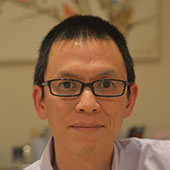
Assistant professor of neurology, University of Texas Southwestern
Differing development: “Jason Lerch presented some intriguing data suggesting that features of certain brain regions — including some clinically implicated cerebellar regions — predicted social behaviors in mouse models of autism. He also presented some very interesting results showing parallels in brain volume between mice and humans — many of these appear to be in cerebellar regions. The data also suggest males and females have differing developmental profiles, underscoring the need for brain imaging studies to account for changes across development.”
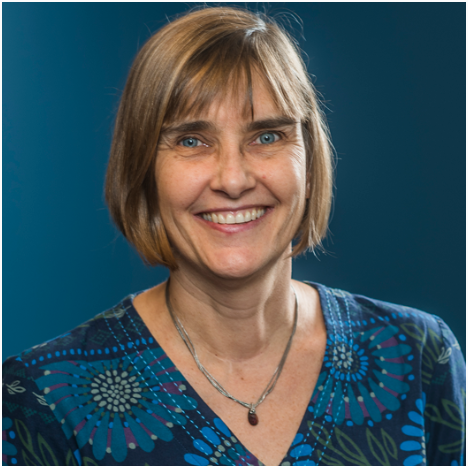
Professor of neurology, pediatrics and psychiatry, George Washington University
Iterative interventions: “In her comments on the panel ‘School-Based Interventions for Children with ASD: Harnessing the Power of Parents and Teachers,’ discussant Lauren Brookman-Frazee emphasized the importance of beginning any intervention with a full exploration of what the participants want and need, and then making the intervention as simple as possible. She called for a process of ‘iterative simplification,’ which means that with each revision of the intervention, we should also seek to make the intervention simpler. We can do this by removing lessons or activities that are extraneous or not central to the intervention’s effectiveness, for example. Too often we ask too much of the people who have to deliver the intervention: It takes too much time, is too complex or requires too much preparation. For those of us doing intervention effectiveness research in complex settings such as schools, these are words to live by.”
Cautious conclusions: “Katherine Gotham, assistant professor at Vanderbilt University, demonstrated that by parsing a group of autistic participants into two groups — those who had high or low features of depression — she erased what appeared to be clear differences in pupillometry data between typically developing and autistic participants. It was a powerful reminder of the complex heterogeneity that defines autism and the importance of looking deeply into our data before drawing conclusions.”
Assistant professor psychiatry and behavioral neurosciences, McMaster University
Human factor: “I gave a standing ovation for Catherine Lord, the recipient of the INSAR 2019 Lifetime Achievement Award. During a time of real and perceived ‘tensions’ in the autism community, Lord highlights the importance of the human factor as the key to progress and development. We do not all agree on the language we should use to describe autism. We do not all agree on the methods and tools we should use to study autism. But if we can place the human factor at the center of everything we do, that would serve as a strong compass throughout our journey.”
Senior researcher, INTER-PSY
Diverse discussions: “INSAR is the ideal place to get in touch with researchers, clinicians and autism advocates and to exchange ideas about the latest findings. Especially at the posters, one can come into contact with like-minded people, but also opposing opinions. It is only the first day and already I have so many new ideas for research and so many new contacts. I’m curious to see what tomorrow will bring.”
Sensory sensitivity: “Sensory issues — such as hyperreactivity, hyporeactivity and sensory-seeking behaviors — are common in autism. But how common depends on the way these issues are measured. Teresa Tavassoli, lecturer at the University of Reading, talked about how to reliably measure auditory and tactile over-responsivity in children with autism. Sensory over-responsivity is considered to be the most common and impairing sensory-processing difficulty in autism. Her tip was to not solely rely on sensory questionnaires or on standardized direct observations, but to combine both, as there is only moderate overlap between these two types of measurements.”

Associate professor of psychiatry and behavioral sciences, University of Washington
Processing problems: “Two face-processing presentations drew my attention. The first, by Andreas Meyer-Lindenberg, professor at University Medical Centre Mannheim, focused on data from the EU-AIMS Longitudinal European Autism Project. Using multiple behavioral measures of facial emotion recognition in a large sample and across a wide age range, the researchers found two clusters within each diagnostic group, representing those with better or worse performance. These clusters were related to autism traits, adaptive skills and amygdala activation.
“The second talk was by Kathryn Hauschild of the Lerner Lab at Stony Brook University. She presented data from a large sample of teenagers with autism. The researchers found that teenagers with autism, similar to teenagers without autism, were better at emotion regulation when viewing faces of people who were their age than when viewing adult faces. In individuals with severe autism traits, intelligence was related to emotion-recognition scores; however, in individuals with less severe traits, age significantly moderated this relationship. Understanding the nuances of emotion recognition could help researchers develop more targeted face-processing interventions.”

Associate professor of clinical psychology, Stony Brook University
Human highlight: “The talk of the day was Catherine Lord’s unforgettable speech accepting the Lifetime Achievement Award. In her inimitable way, Lord eschewed an empirical summary of her incredible scientific achievements and instead focused on her journey and the people who impacted her along the way. These included her mentors and collaborators as well as her students. Vitally, she highlighted the importance of remembering the human aspect of autism research: that the individuals with whom we work must be appreciated not as data, but as people who seek and value and need a sense of connection in the world. Most importantly, she exemplified and embodied the values that have defined her career — that one need not trade family for science and that it is imperative that we foster a sense of belonging together.”
Associate professor of psychology and neuroscience, Brigham Young University
Valuing variability: “The most remarkable theme I’ve seen in today’s sessions is that understanding variability within autism is just as important as comparing people who have autism with control groups or any other groups. For example, Katherine Gotham reported that depression symptoms explained emotional arousal — measured by pupil size — better than autism traits. She concluded that not everything we observe in autism necessarily stems from autism, noting that challenges such as anxiety and depression affect thinking and feeling regardless of diagnosis. Indeed, looking at averages can obscure our understanding of individual differences. This is true when averaging data on a group-by-group basis (for example, autism versus non-autism samples), or even when averaging an individual’s data together over large chunks of time. I am excited to see an emphasis on better, more accurate ways of understanding individual experience.”
30 April 2019: Heading to Montreal
The autism research community is gathering in Montreal, Canada, this week for the meeting of the International Society for Autism Research (INSAR). Now in its 18th year, the three-day scientific conference continues to be the largest international meeting of autism researchers in the world.
On Wednesday, about 2,200 scientists, clinicians and members of the autism community are expected to come together at the Palais des congrès de Montréal conference center in downtown Montreal. This year, attendees can choose from more than 1,800 posters, oral presentations and panel discussions covering a variety of topics in autism research.
Keynote speakers include Kathryn Roeder, who is slated to discuss insights from autism genetics into brain development in autism; and Jason Lerch, who studies brain differences among mouse models of autism. Vikram Patel is scheduled to share his perspective on global disparities in autism care And Elizabeth Berry-Kravis plans to describe new approaches for developing drugs for fragile X syndrome.
The program also includes presentations on the cerebellum, adult outcomes and genetic discovery. Members of the local autism community are holding an Autism Festival showcasing art, local training initiatives and research involving the community during the meeting.
The Spectrum team will be at INSAR, too, reporting on the most notable findings. You can stay up to date with our coverage here and by following us on Twitter or Facebook. Check back frequently, as new stories post throughout the day. Subscribe to our newsletter to receive a roundup of the day’s news every evening.
You can also join us for two special Spectrum events during the conference: a storytelling event and our traditional Twitter chat.
Spectrum is delighted to partner with The Story Collider, a science storytelling production company, for a special live show on Thursday, 2 May at the Centre Phi in Montreal. In this show, scientists, people on the spectrum and their family members share their experiences with autism research — and one another.
You can purchase tickets here. Doors open at 6:30 p.m. The show begins at 7:00 p.m. Please arrive promptly, as seating is first come, first served.
Participate in our live Twitter chat about autism research presented at INSAR 2019. At 12:30 p.m. on Friday, 3 May, you can join us online or in person in the press room at the Palais des congrès de Montréal. We will tweet questions and moderate the chat using the handle @Spectrum and the hashtag #INSARChat.
For more reports from the 2019 International Society for Autism Research annual meeting, please click here.
Recommended reading

INSAR takes ‘intentional break’ from annual summer webinar series

Dosage of X or Y chromosome relates to distinct outcomes; and more
Explore more from The Transmitter
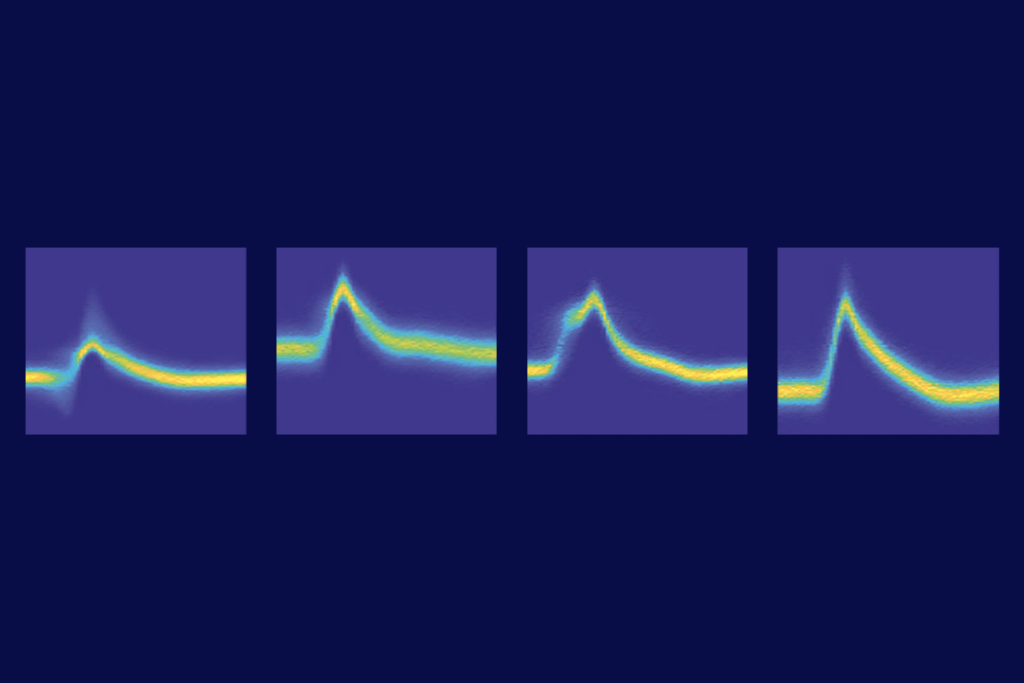
Null and Noteworthy: Neurons tracking sequences don’t fire in order


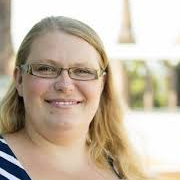
 Mikle South
Mikle South Els Blijd-Hoogewys
Els Blijd-Hoogewys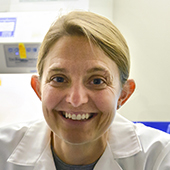
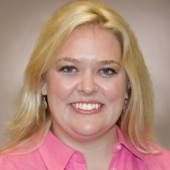
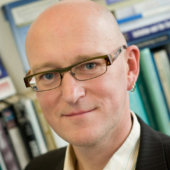 Tony Charman
Tony Charman Gauri Divan
Gauri Divan Liz Pellicano
Liz Pellicano David Skuse
David Skuse Stelios Georgiades
Stelios Georgiades Lauren Franz
Lauren Franz